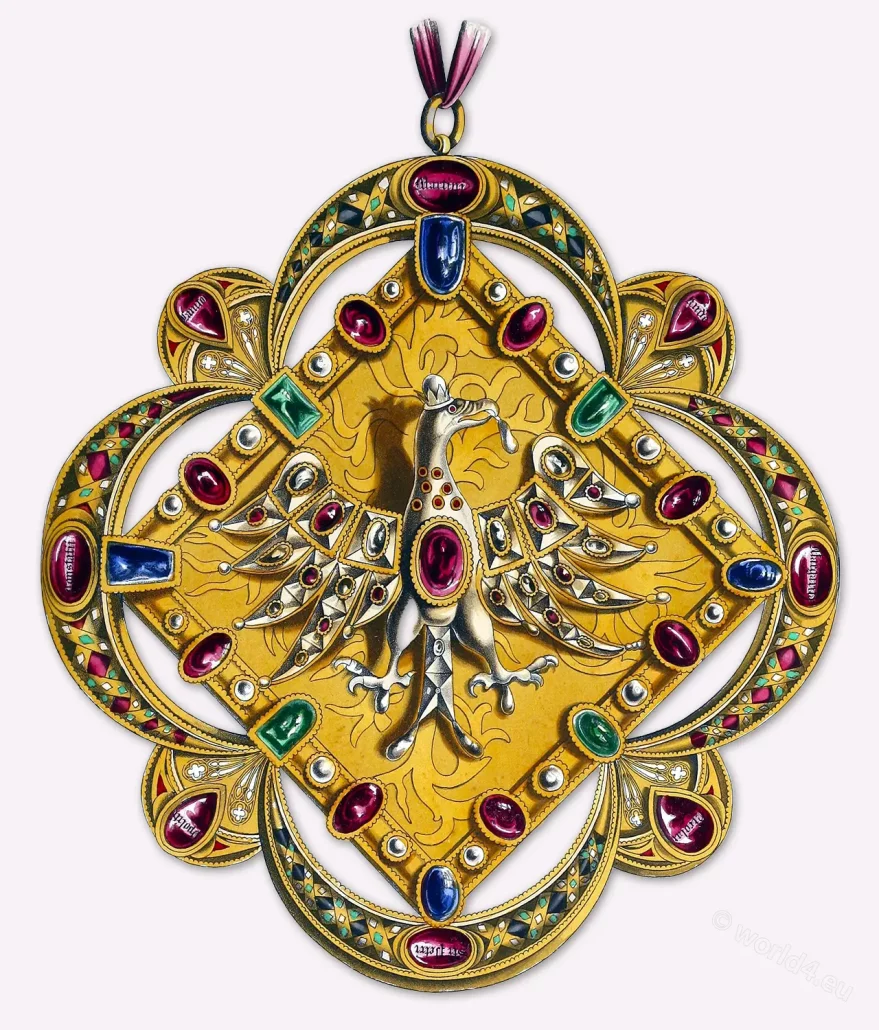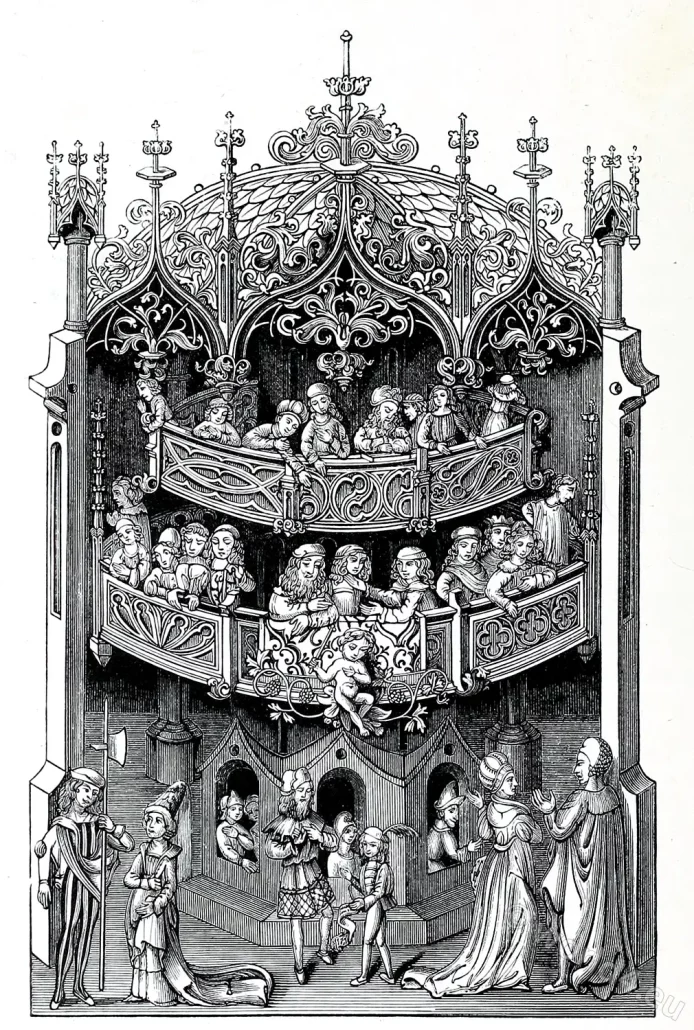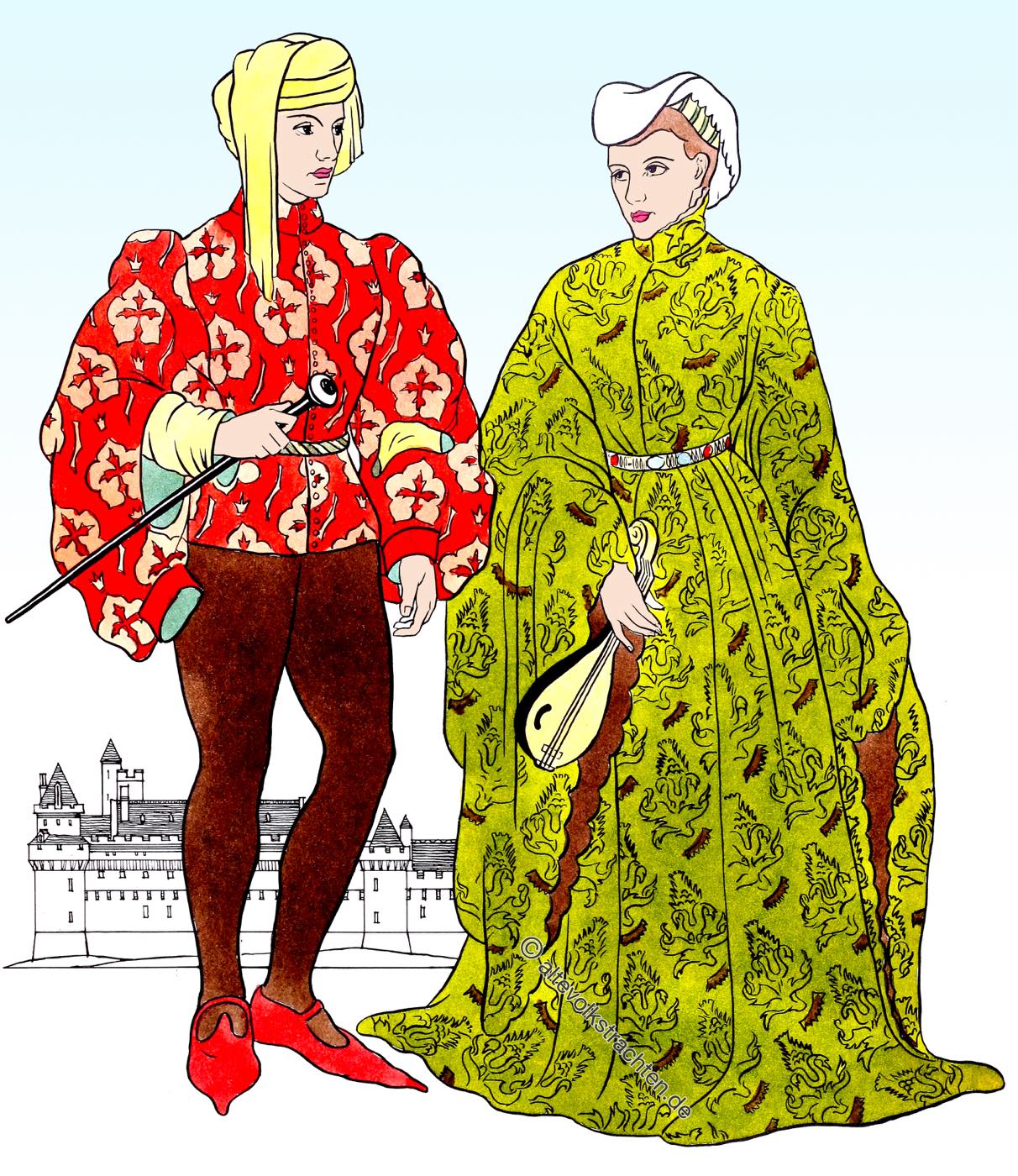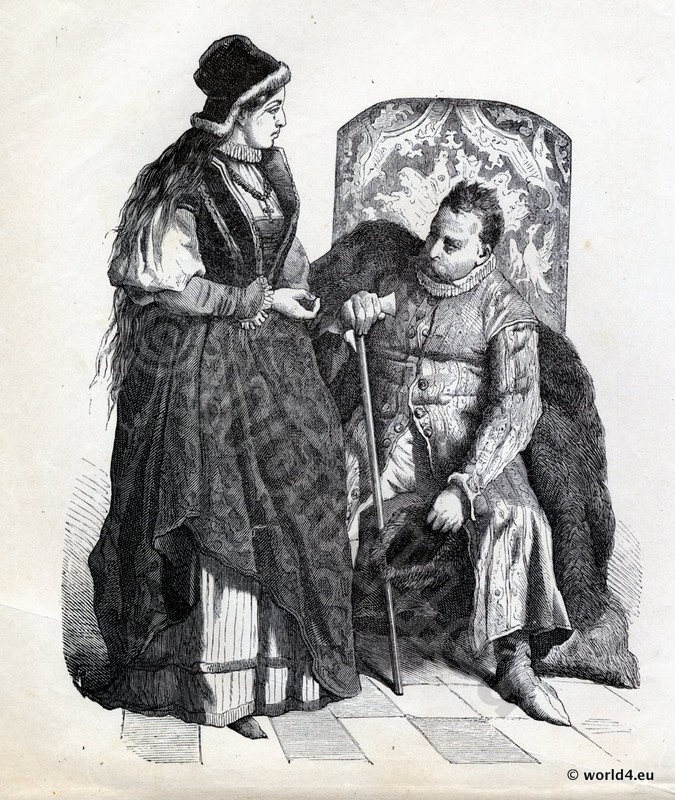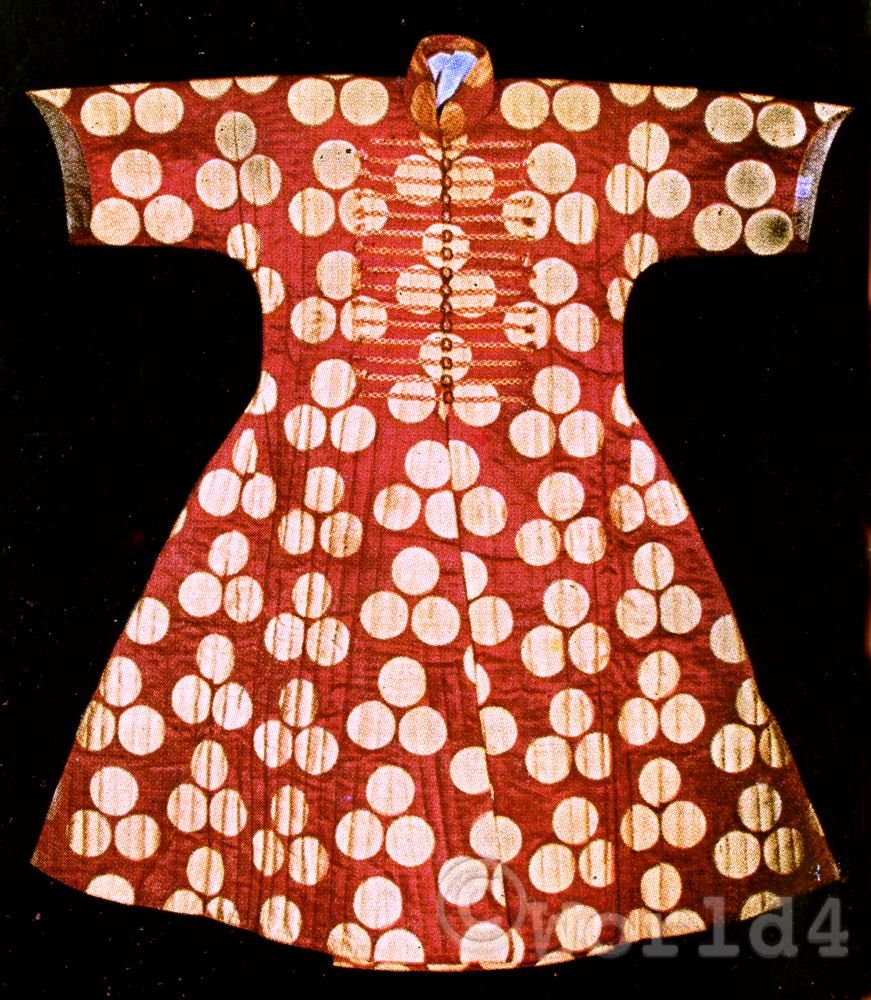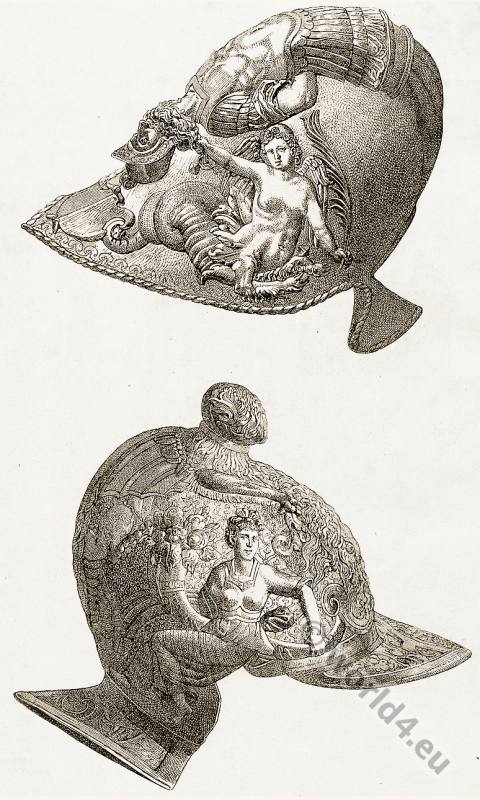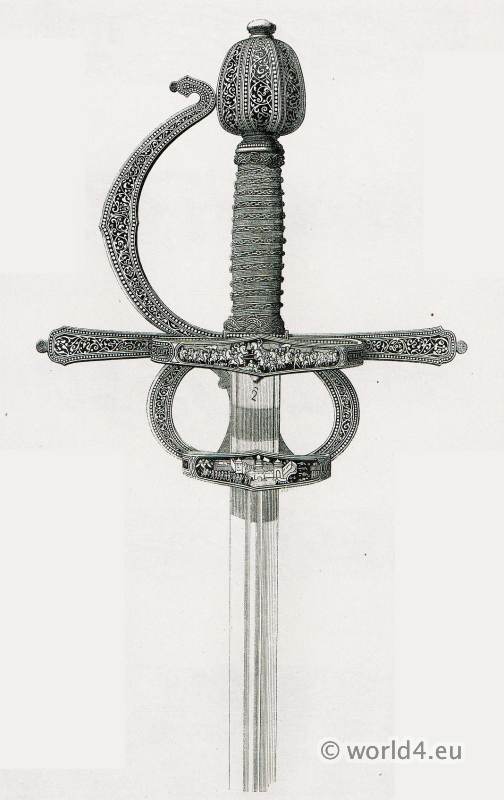CLASP OF THE EMPEROR CHARLES V. (1500-1558)
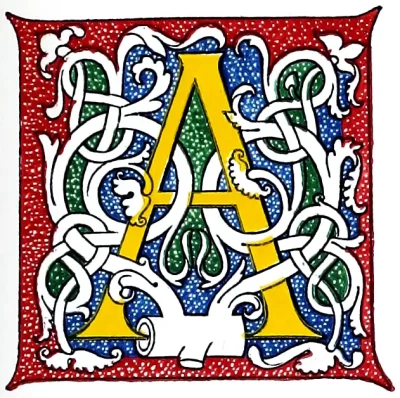
AMONG the numerous rich specimens of ancient bijouterie which have been preserved from the ravages of time, we know of few more elegant than the clasp represented in our plate, which is now in the Debruge collection at Paris. It was made for that celebrated monarch, the Emperor Charles V., the ally of our King Henry VIII. against Francis I. of France and it is ornamented with the figure of; the Austrian eagle.
This jewel, which is represented in our engraving- of the size of the original, exhibits a mass of precious stones. The breast of the eagle is covered with rubies ; the wings are ornamented with alternate rubies and a kind of gray stone. Pearls hang from the tail, beak, and legs. The head is covered with a pearl ; and the neck and thighs with small rubies. The eagle, which is placed on a gilt and ornamented ground, is enclosed within a lozenge, formed of a line of sapphires, pearls, amethysts, and emeralds. The outer border of the clasp is richly adorned with white, red, and deep green enamel, and in the circuit are eight names of saints, written on small pieces of paper, mounted on pink silk, and each covered with a glass. These names appear to be Martini, Andrea?, Margarita?, Nicolai, Sancti Petri, Ypoliti, Constantii, Laurentii.
The wood-cut at the foot of the following page is taken from an early folio edition of Terence, printed at Strasburg (Argentina) in 1496, by Johann Griininger. This volume is profusely adorned with wood-cuts, intended to represent the scenes of the comic poet, which have every characteristic of being the work of a German engraver. The original of the cut which we give, is boldly engraved on a block of the full size of the folio page; but it would be difficult to decide who was the engraver.
At the foot is printed the word THEATRUM It is intended to exhibit the stage of a theatre; but there is great room for doubting whether it may not be considered as a mere fanciful design of an ancient Roman theatre, rather than a representation of any theatre which existed at the time it was engraved.
In the western and northern parts of Europe, theatrical exhibitions were still of a very rude character, and may be divided into the two classes of mysteries and miracle plays, which were performed in the open air on wooden scaffolds, or in the churches and monasteries, and pageants, for which also the place of performance and the decorations were temporary, made and arranged only for the occasion.
Our modern mountebank shows a similar character which are still sometimes seen at country fairs, are the representatives of the stage of the middle ages. The figures in our cut appear as though intended to represent characters in the plays of Terence; but they are perfect examples of the costume of the age in which the picture was drawn and engraved.
Source: Dresses and Decorations of the Middle Ages from the seventh to the seventeenth centuries by Henry Shaw F.S.A. Published: London William Pickering 1843.

